Monday, May 30, 2011
Commonwealth Bank, Leeton
For Leeton, in rural NSW, this meant that their 1921 Government Savings Bank by Sydney architects Ross & Rowe became a branch of the Commonwealth Bank. That was in December 1931 and by the end of the decade the new owners had made some alterations in Art Deco style. There have been more changes since then it remains a very stylish building.Reference:
Leeton ~ Yanco ~ Whitton - Heritage Trails booklet, Leeton Shire Council, 2011
(Available for free download from www.leetontourism.com.au/art-deco.html)
Sunday, May 29, 2011
Service Station, Yenda
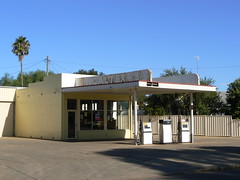 What do we think of this little servo in the rural NSW town of Yenda?
What do we think of this little servo in the rural NSW town of Yenda?
I really like it.
I like the stepped roof line at the side of the building and I like the curved ends of the faded CALTEX signs.
Saturday, May 28, 2011
255 & 265 10th Street, San Francisco
 This is a pair of deco buildings dating from 1932 in San Francisco's Tenth Street.
This is a pair of deco buildings dating from 1932 in San Francisco's Tenth Street.
The nearer, number 255, has been painted to bring out the Art Deco details and while I have to admit it was the colours that confirmed that this was the next stop on my walk, I think I prefer Number 265, the unpainted twin next door.
Reference:
Deco by the Bay: Art Deco Architecture in the San Francisco Bay Area ~ Michael F Crowe
Friday, May 27, 2011
Apartments, Euclid Avenue, Miami
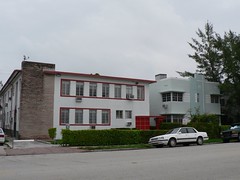 We are so used to seeing pastel colours in Miami South Beach that it is nice to see some a primary colour. On this apartment building in Euclid Avenue it is a red roofline, framing around the windows and the entrance.
We are so used to seeing pastel colours in Miami South Beach that it is nice to see some a primary colour. On this apartment building in Euclid Avenue it is a red roofline, framing around the windows and the entrance.
I think the red colour fits very well with this particular building because it is different in style to many Miami buildings. Simplier and modernist in style with a large expanse of raw brick.
And next door for comparison we have a more typical Miami apartment block painted in typical Miami shades.
Wednesday, May 25, 2011
Education Building, Redeemer Lutheran Church, Bartlesville
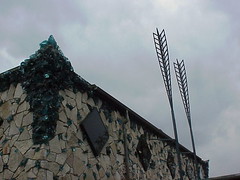 It is interesting sometimes the buildings that get included on tours during an Art Deco World Congress.
It is interesting sometimes the buildings that get included on tours during an Art Deco World Congress.
The trip to Bartlesville during the Tulsa World Congress in 2001 included a quick stop at the Redeemer Lutheran Church to see the Education Building dating from 1959 and designed by Bruce Goff.
I wouldn't call it deco but I did find the combination of chunks of glass interspersed with the irregular blocks of stone forming the rest of the wall.
Even the windows are set in the wall as diamonds as if to further enhance the crystaline feeling to the building.
Monday, May 23, 2011
Rose Court, Sea Point
 I really enjoyed dipping into Sea Point yesterday so I decided to stay in Cape Town for today's building, in fact I stayed in Sea Point, ust a few doors up from Bordeaux Court.
I really enjoyed dipping into Sea Point yesterday so I decided to stay in Cape Town for today's building, in fact I stayed in Sea Point, ust a few doors up from Bordeaux Court.
This is Rose Court in Avenue St Denis. Again it has squared-off open balconies atthe corners of the building with deep concrete eyebrows to provide lots of shade.
The entrance is marked by two vertical fins. They rise above the name of the building spelt out in metal letters above the door either side of a series of small square windows providing light for the stairwell.
Sunday, May 22, 2011
Bordeaux Court, Sea Point
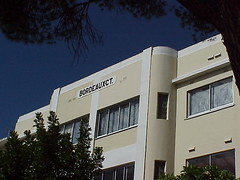 I love the contrast between the dark of the trees and the light of the building lit by the South African sun in this photo of Bordeaux Court in Sea Point, Cape Town.
I love the contrast between the dark of the trees and the light of the building lit by the South African sun in this photo of Bordeaux Court in Sea Point, Cape Town.
From memory (and the other photos I have), Bordeaux Court is symetrical with squared-off stepped back sections either side of this central cureved area. The balconies at the corner of the building are open with those on the top shaded by deep concrete eyebrows. This view from the another angle shows the open balconies and the dramatic setting Bordeaux Court provides for its residents in the shadows of the hills around Cape Town overlooking the ocean.
This view from the another angle shows the open balconies and the dramatic setting Bordeaux Court provides for its residents in the shadows of the hills around Cape Town overlooking the ocean.
Wednesday, May 18, 2011
Monday, May 16, 2011
A House in Hamilton
 This is a house in Hamilton in Victoria's Western District. It looks quite plain but there are a couple of features that I really like such as the bars across the main windows on the front room. I can't tell if they are metal or wooden frames but the style does resemble metal windows often found on flats and commercial buildings.
This is a house in Hamilton in Victoria's Western District. It looks quite plain but there are a couple of features that I really like such as the bars across the main windows on the front room. I can't tell if they are metal or wooden frames but the style does resemble metal windows often found on flats and commercial buildings.
The other feature that I really like is on the curved section of the house. The brickwork at the roof line is castellated incorporating small sections railings in the gaps. It is an unusual feature and I imagine purely decorative since the parapet is not high enough for a roof terrace. Interesting!
Sunday, May 15, 2011
Ebrahim Court, Durban
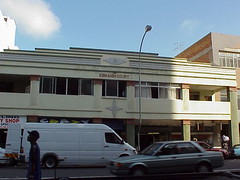 This great little deco building, Ebrahim Court, is in the Indian quarter of Durban.
This great little deco building, Ebrahim Court, is in the Indian quarter of Durban.
I really like the strong horizontal feel emanating from the banding at the roof line. Four and a half shops wide and only two tall helps as well.
And while the Art Deco decorative piece breaking the horizontal is good but the star-shaped element above the door is wonderful.
Saturday, May 14, 2011
Entrance, Graybar Building, NYC
Firstly there is a flagpole sitting on an extrodinary black, gold and red support with a stylised eagle at the base of the flagstaff. The whole thing really stands out against the gray background of the building.
This entrance is also flanked by two figures but while the figures on the other entrances look like gods or kings, these figures appear to represent the ordinary man. Again, like the other figures, they are richly detailled and each is holding an object but in this case we see modern objects.One man is holding a telephone.The other, a truck.
It is also interesting to note that each figure is holding something in their other hand which could be a lantern and these in turn are used to disguise the anchor points for chains that connect to the actual lights either side of the door. A nice way to hide some structural aspects of the decoration.
Wednesday, May 11, 2011
Equinox Entrance, Graybar Building, NYC
Monday, May 9, 2011
Grand Central Terminal Entrance, Graybar Building, NYC
This is what the whole entrance looks like. You can see the rats crawling up the supports of the canopy over the doors. But also have a look at the heads of various creatures holding the rods for the rest of the canopy and then much higher up two figures, one on each side of the entrance.
Those figures are wonderfully detailled and look a bit Assyrian to me. The one on the left is clutching a globe.
The other one is holding a sea creature.
This entrance, leading to Grand Central Terminal, is one of three along this facade of the Graybar Building. I'll show you the other two over the rest of the week.Sunday, May 8, 2011
The Chalet, Hamilton
 The Chalet, in Hamilton, was built around 1947 in the effort to eradicate tuberculosis in post Second World War Australia. It was designed by the Public Works Department of Victoria using the principles of similar establishments in Europe. The large bank of north-facing windows allowing maximum exposure to the winter sun bring to mind the sun-deck of Alvar Aalto's 1929 Paimio Sanitorium in Finland.
The Chalet, in Hamilton, was built around 1947 in the effort to eradicate tuberculosis in post Second World War Australia. It was designed by the Public Works Department of Victoria using the principles of similar establishments in Europe. The large bank of north-facing windows allowing maximum exposure to the winter sun bring to mind the sun-deck of Alvar Aalto's 1929 Paimio Sanitorium in Finland.
Hamilton - Art Deco & Modernism, Diane Luhrs & Linley Bramall, 2011
Saturday, May 7, 2011
RSL, Seymour
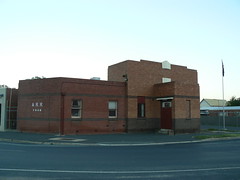 I spotted this little hall, the Seymour RSL, in the early post-dawn light during a quick stop on the way to Leeton.
I spotted this little hall, the Seymour RSL, in the early post-dawn light during a quick stop on the way to Leeton.
At first I thought it was a typical modernist arrangement of rectangular blocks but, as is usually the case, closer inspection reveals a more complex story. There is the use of different coloured bricks creating a dark base for the small entrance foyer and that section of the hall that leads directly off it. A horizontal band runs from the top of that base around the rest of the building. A second band then runs around the whole building at a height just above the door.
Then, strangely perhaps, there is a pure Art Deco feature on the skyline. I don't understand why there is a gap in the element. Perhaps there was something in that gap that has since been removed.
Friday, May 6, 2011
Salvation Army Family Store, Leeton
 Wednesday's post on the wonderfully named Leeton local newspaper, the Murrumbidgee Irrigator, drew some interest from Jason at Leeton Tourism so, since I'm on a roll, I decided to feature another building from this surprising NSW Riverina town.
Wednesday's post on the wonderfully named Leeton local newspaper, the Murrumbidgee Irrigator, drew some interest from Jason at Leeton Tourism so, since I'm on a roll, I decided to feature another building from this surprising NSW Riverina town.
This is 33 Pine Avenue. It was designed by George W A Welch, who seems to have designed a lot of the Art Deco buildings in Leeton. It was built 1935-36.
Obviously the main feature is the stepped roofline and the fin in the centre of the building but the stepping of the verandah at the entrance is unusual. I haven't seen it anywhere else.
Art Deco Walking Tour Booklet, Leeton Art Deco Festival, April 1-3 2011, Prepared by Robin Grow, President, Art Deco and Modernism Society
Wednesday, May 4, 2011
The Murrumbidgee Irrigator, Leeton
Leeton was first developed as part of the Murrumbidgee Irrigation Area or the MIA in the early part of the 20th Century so many of the buildings date from that period and many have Art Deco features.
103-107 Pine Avenue was built in 1928 for the local newspaper and it still occupies No 107.
And I think it has one of the best names for a newspaper that I have ever heard ... The Murrumbidgee Irrigator.Reference:
Art Deco Walking Tour Booklet, Leeton Art Deco Festival, April 1-3 2011, Prepared by Robin Grow, President, Art Deco and Modernism Society
Monday, May 2, 2011
A House in Hamilton
Sunday, May 1, 2011
Danger - High Tension - Melbourne
When I first saw the sign I thought it was a futuristic 'S' shape but closer inspection revealed it was an impression created by sections of the red enamel having been chipped away over time.
In a way, I think that make it more interesting.

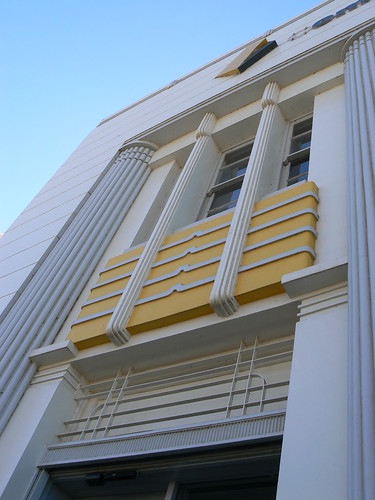
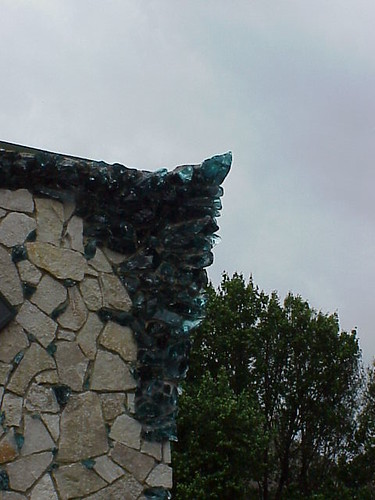
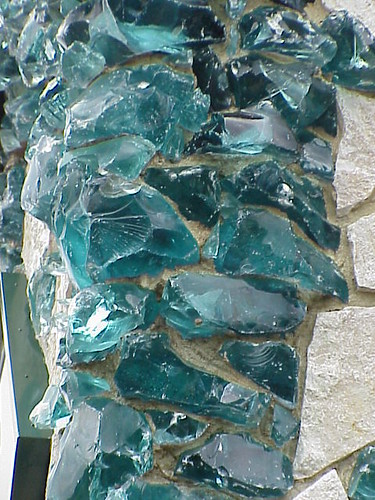
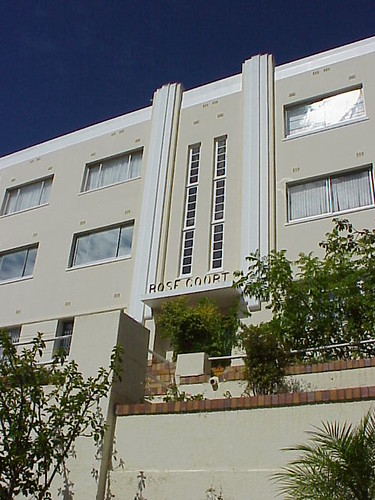
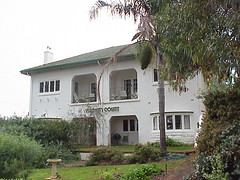
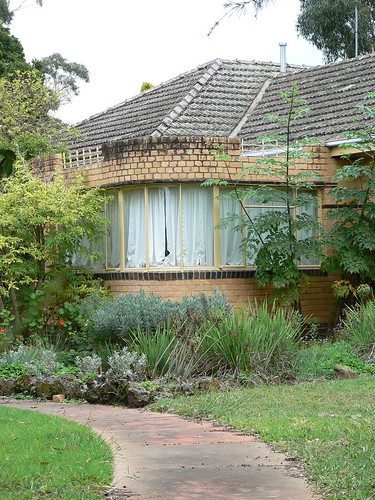
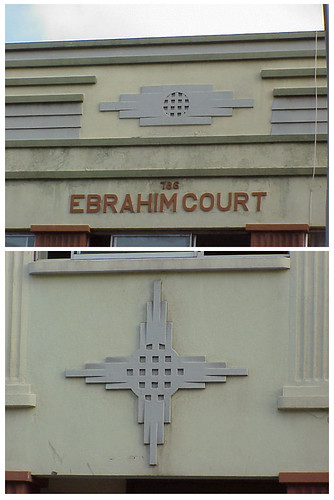
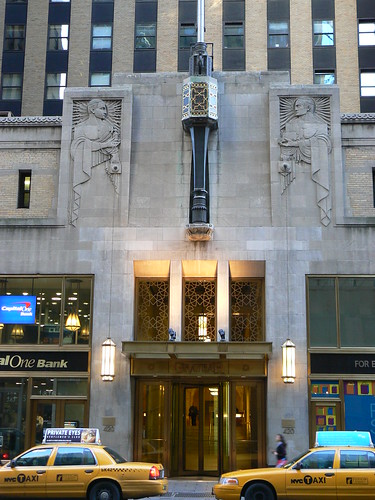
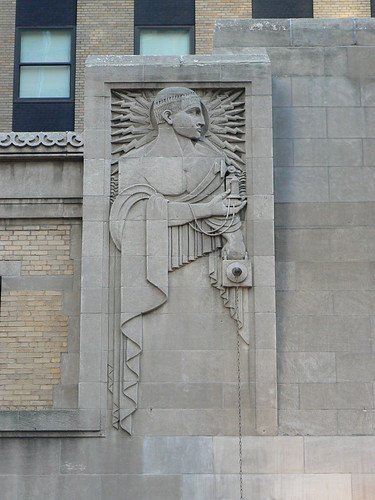




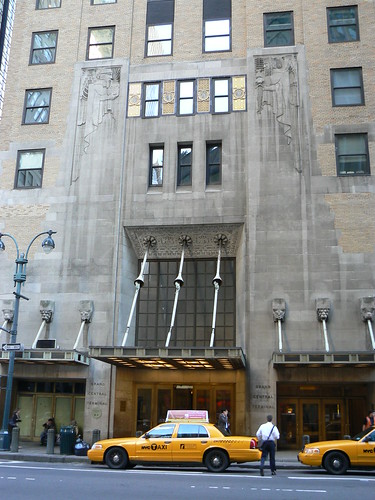
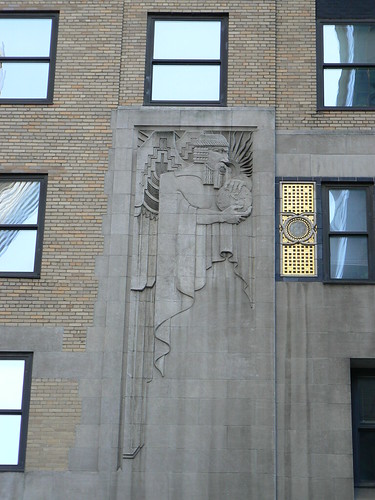
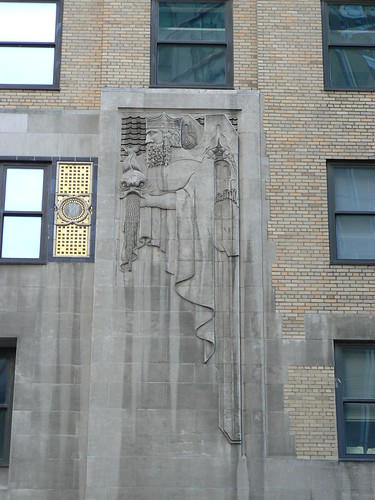
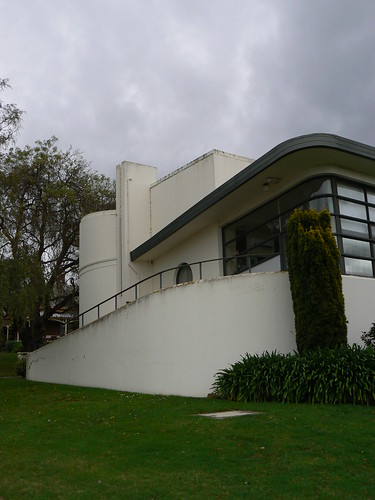

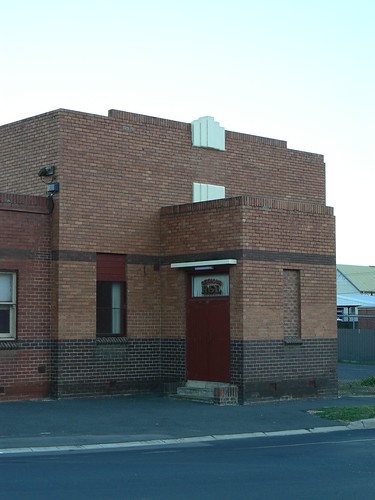

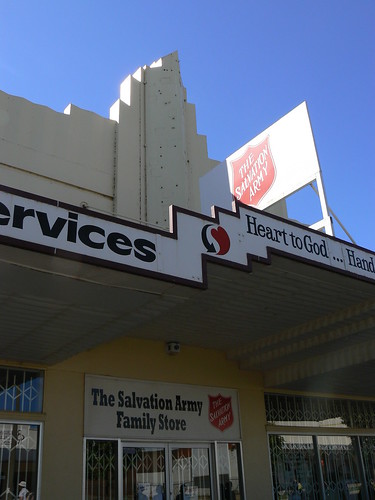

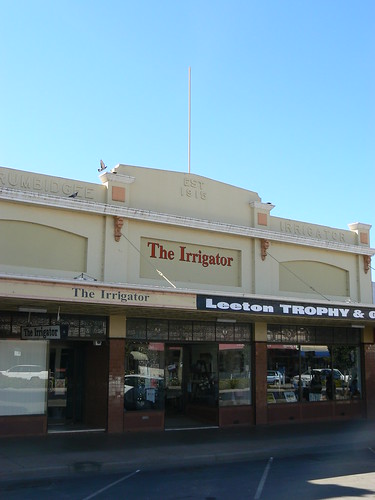
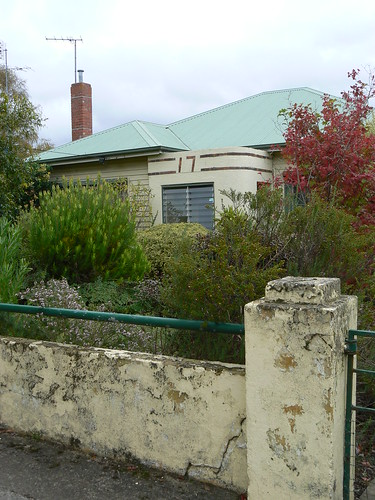
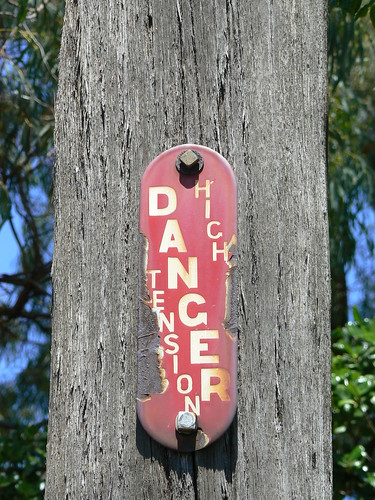







































.jpg)














